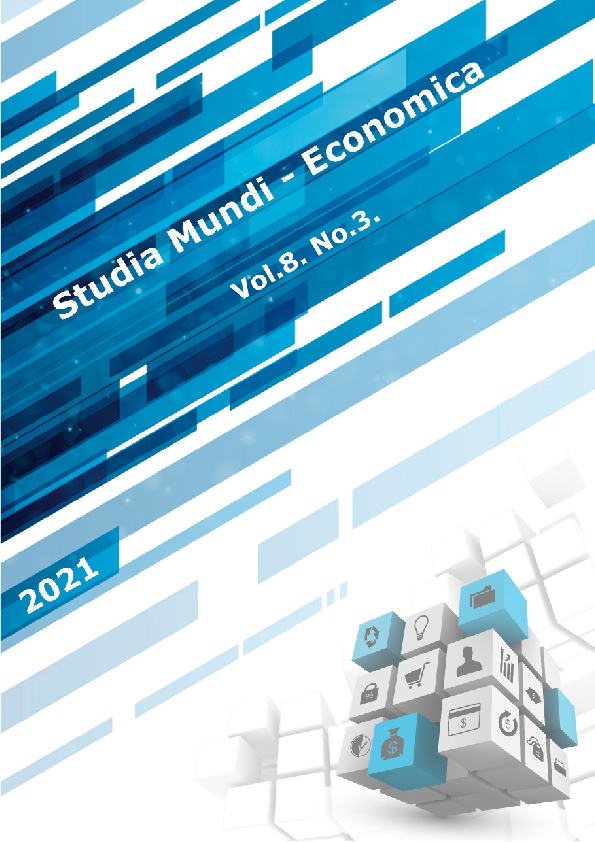Economic development in the Carpathian basin in the light of population trends in Vojvodina
DOI:
https://doi.org/10.18531/Studia.Mundi.2021.08.03.46-59Keywords:
népesedés, gazdaságfejlesztés, forráslehívó készség, Kárpát-medenceAbstract
Vojvodina, a geographical and administrative unit, is located in the northern part of Serbia and has a favorable geographical location. The area was characterized by intensive population movements and constant changes in national proportions. Today, 26 nationalities live in its territory, of which the Hungarian minority community is the most significant. There are six official languages in use in the provincial offices. The indisputable preconditions for the preservation of national identity: the possibility of using the mother tongue, organizing mother tongue education, providing information in the mother tongue and living and passing on folk traditions and culture to new generations. At the same time, everyday living issues also significantly affect the chances of staying in the homeland and preserving national identity. In 2016, in order to preserve the foreign parts of the community, the Government of Hungary launched the Carpathian Basin Economic Development Program, in the framework of which about HUF 300 billion worth of development has been realized so far, with about HUF 158.4 billion worth of support thousands of jobs were created besides Vojvodina, in Transcarpathia, Transylvania, Felvidék, Muravidék and Drávaszög. The research focuses on the correlations between population processes and economic development programs, relying primarily on the results of Vojvodina and other cross-border economic development programs, as well as on official census data.
References
Alexia Prskawetz, Thomas Fent, Werner Barthel (2007): The Relationship Between Demographic Change and Economic Growth in the EU (Report for Tender VT/2005/035), Vienna Institute of Demography, Austrian Academy of Sciences, URL: https://www.oeaw.ac.at/fileadmin/subsites/Institute/VID/PDF/Publications/Forschungsberichte/FB32.pdf (letöltve: 2021.04.22.
Badis Róbert (2017): Demográfiai folyamatok és etno-kulturális reprodukció vizsgálata a vajdasági magyarok körében, Identitás Kisebbségkutató Műhely, Zenta
Belanka Csaba (2007) Mezőgazdaság. In: Nagy Imre (szerk.): Vajdaság., Dialóg Campus Kiadó, Pécs–Budapest, p. 256–259, ISBN 978 963 9052 33
Bódi Ferenc (2010): Népességfogyás, a szegénység ördögi köre, A falu, 25:3, pp. 21-34
Bódi Ferenc, Fekete Attila, Bódi Mátyás (2010): A fejlesztési források abszorpciója az apró- kis-és középvárosok erőterében. In: Párbeszéd és együttműködés. Területfejlesztési szabadegyetem 2006-2010 (szerk.: Fábián Attila), Dialóg Campus Kiadó, Sopron.
Gábrity Molnár Irén (2005 a) Vajdasági egyházak, vallásgyakorlási nehézségek. In: Gábrity Molnár Irén–Mirnics Zsuzsa (szerk.): Közérzeti barangoló., Magyarságkutató Tudományos Társaság, Szabadka
Gábrity Molnár Irén (2005 b): Mit értünk szórvány magyarság alatt Vajdaságban? Létünk XXXV (3), Újvidék, p. 19–31.
Káposzta József (2014): Területi különbségek kialakulásának főbb összefüggései, Gazdálkodás, 58(5), pp 399-414, DOI: https://doi.org/10.22004/ag.econ.206101, ISSN: 0046-5518
Káposzta József, Lőrinc Balázs, Urbánné Malomoski Mónika (2020): Térbeli összefüggések vizsgálata Paks és Kalocsa gravitációs zónájában, Studia Mundi – Economica 7:4, pp. 72-88, DOI: https://doi.org/10.18531/Studia.Mundi.2020.07.04.72-88
Lengyel Imre (2000): A regionális versenyképesség tényezői, különös tekintettel a Dél-Alföldre. In: Farkas B. - Lengyel I. (szerk.) 2000: Versenyképesség - regionális versenyképesség, SZTE Gazdaságtudományi Kar Közleményei. JATEPress (28), Szeged, 39-57. o
Lukovics Miklós (2008): Térségek versenyképességének mérése, JATEPress, Szeged
Nagy Imre (szerk.), 2007., Vajdaság, In: A Kárpát-medence régiói 7., MTA RKK és Dialóg Campus, Pécs-Budapest, p. 575, ISBN 978 963 9052 33 8
Nemes Nagy János (1990): Területi kiegyenlítődés és differenciálódás Magyarországon, Földrajzi Értesítő XXXIX. év f. 1990.1—4. füzet, pp 151—173. Nikolai Botev (2012): Population ageing in Central and Eastern Europe and its demographic and social context. European Journal of Ageing 9, pp 69–79, DOI: https://doi.org/10.1007/s10433-012-0217-9
Popp József, Harangi-Rákos Mónika, Szenderák János, Oláh Judit (2018): Regionális különbségek a főbb mezőgazdasági ágazatokban Magyarországon, Journal of Central European Green Innovation 6(3), pp 87-114, DOI: https://doi.org/10.22004/ag.econ.288837
Probáld Ferenc (2007) Szerbia. In: Probáld Ferenc–Szabó Pál (szerk.): Európa regionális földrajza. Társadalomföldrajz., ELTE Eötvös Kiadó, Budapest, 439–444.
Salamin Géza (2014): Demográfia – gazdaság – területi fejlődés (konferencia előadás), Központi Statisztikai Hivatal, URL: http://unipub.lib.uni-corvinus.hu/6395/1/Salamin_2014a.pdf (letöltve: 2021.04.22.)
Irodalomjegyzék
Szerbiai Statisztikai Hivatal, https://www.stat.gov.rs/sr-latn/oblasti/popis/popis-2011/popisni-podaci-eksel-tabele/, letöltve: 2021.01.30.
Nemzeti Közösségi Titkárság (teljes néven: Tartományi Oktatási, Jogalkotási, Közigazgatási és Nemzeti Kisebbségi – Nemzeti Közösségi Titkárság), http://www.puma.vojvodina.gov.rs/etext.php?ID_mat=180, letöltve: 2021.01.30.
Vajdaság Autonóm Tartomány Európai Ügyek Alapja, https://vojvodinahouse.eu/srl/kancelarija-u-briselu/stranica/1/kantselarija-ap-vojvodine-u-briselu, letöltve: 2021.01.30.
Downloads
Published
Issue
Section
License
Copyright (c) 2021 Juhász Bálint

This work is licensed under a Creative Commons Attribution-NonCommercial-NoDerivatives 4.0 International License.
A folyóirat Open Access (Gold). Cikkeire a Creative Commons 4.0 standard licenc alábbi típusa vonatkozik: CC-BY-NC-ND-4.0. Ennek értelmében a mű szabadon másolható, terjeszthető, bemutatható és előadható, azonban nem használható fel kereskedelmi célokra (NC), továbbá nem módosítható és nem készíthető belőle átdolgozás, származékos mű (ND). A licenc alapján a szerző vagy a jogosult által meghatározott módon fel kell tüntetni a szerző nevét és a szerzői mű címét (BY).






